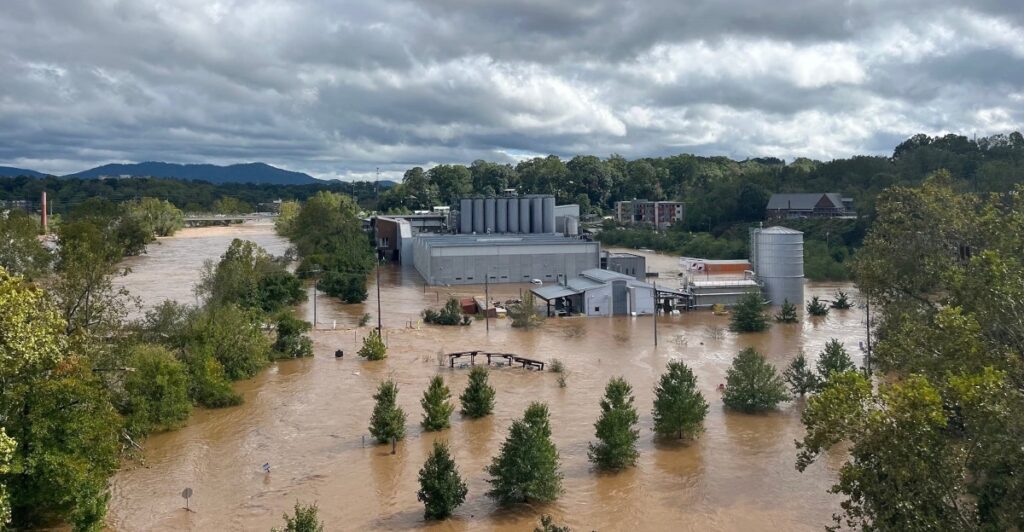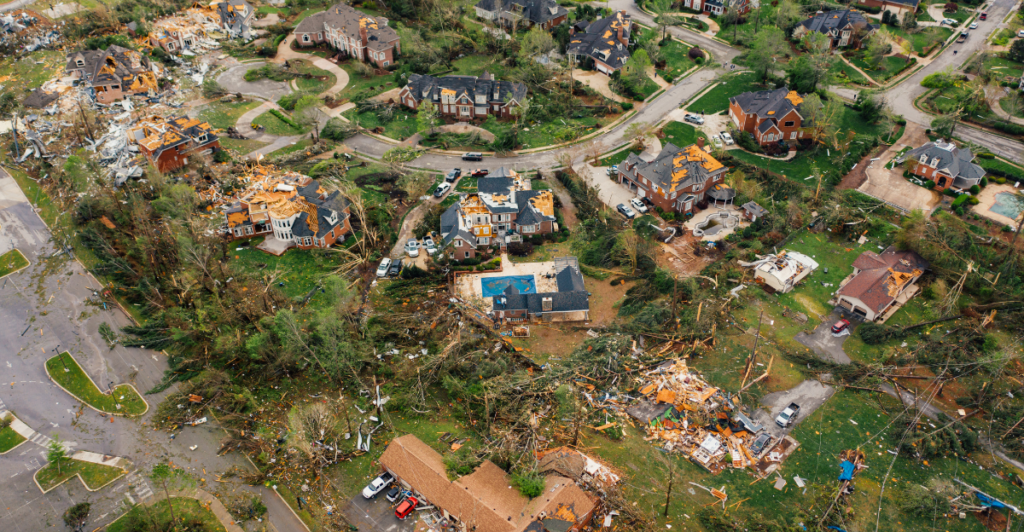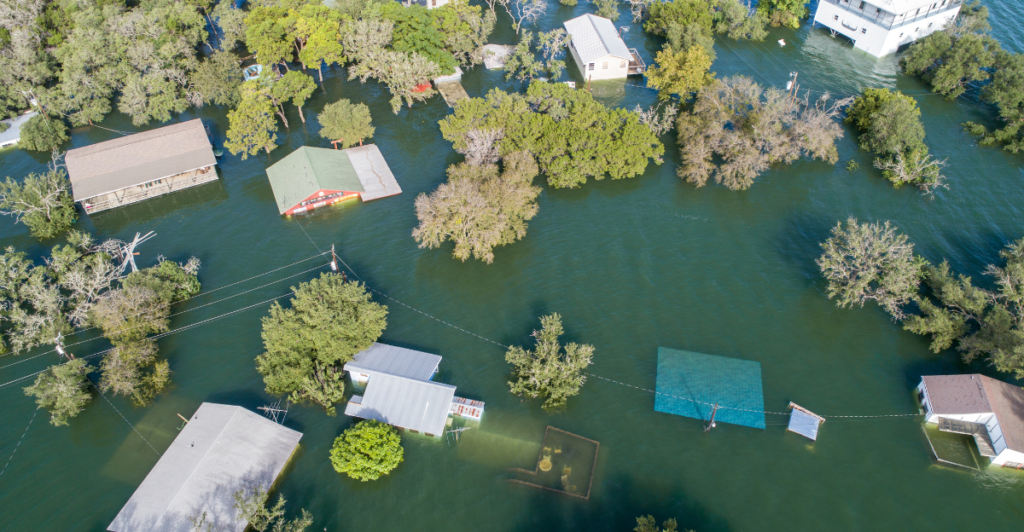
Six months after Hurricane Helene tore through western North Carolina, families are still digging through the wreckage—only now, they’re up against a different storm. FEMA has suddenly ended its full reimbursement for recovery, shifting the burden onto already battered communities.
The headlines point to budget decisions, but the real fallout runs deeper: poisoned waterways, stripped forests, unraveling ecosystems. “This isn’t just about budgets; it’s a live experiment in how institutional withdrawal accelerates environmental collapse.”
Governor Josh Stein’s unsuccessful appeal underscores a stark shift—disaster response is no longer about urgency, but optics. As federal aid drops to 90%, both residents and wildlife are left scrambling for balance in a system that no longer adds up.
The Economic Domino Effect

FEMA’s retreat sets off a quiet but far-reaching domino effect. Local governments are now on the hook for 10% of recovery costs—a $600 million strain on a state still staggering under $60 billion in storm damage.
The fallout is stark: schools shifting textbook funds to debris cleanup, hospitals postponing upgrades to fix washed-out roads. Behind the scenes, insurers are already revising their risk models—flood-prone areas could see premiums soar by 40% in 2026.
This isn’t just budget tightening; it’s financial suffocation. In rural counties like Avery, where median income hovers around $44,000, leaders face impossible decisions—“save collapsing bridges or contaminated watersheds.” The numbers may be bureaucratic, but the choices are painfully human.
Biodiversity’s Tipping Point

Western North Carolina’s ecosystems are buckling under Hurricane Helene’s aftermath. Floods blanketed the French Broad River in sediment, burying spawning beds and wiping out aquatic insects that support 73 native fish species.
Reforestation efforts have stalled after FEMA cuts, leaving 55,000 acres bare and vulnerable to erosion and algal blooms. Nutrient runoff and sewage leaks are worsening river health. Red wolves, already down to fewer than 20 in the wild, face growing habitat fragmentation as mudslides threaten key crossings.
Without tree cover, temperature spikes and slope failures are pushing endangered species like the hellbender and bog turtle closer to extinction. “This isn’t conservation—it’s managed extinction.” Experts warn that without renewed federal support, long-term recovery for native wildlife may be impossible.
Katrina’s Ghost in Appalachian Hills

FEMA’s handling of Hurricane Helene echoes the same structural failures the 2006 Post-Katrina Emergency Management Reform Act was meant to fix. That law mandated faster aid, yet history tells a familiar story: just 23% of Sandy’s $50B housing assistance reached victims within two years.
In North Carolina, 42% of approved Helene housing grants—$1.2B—remain stuck in limbo, delayed by FEMA’s withdrawal and a backlog of 78,500 unresolved cases. The irony deepens under a 2025 administration that proposed slashing FEMA’s budget by 15% while rejecting Governor Stein’s appeal for full federal cost-share.
This isn’t just bureaucratic drag—it’s a slow-motion failure repeating at faster speeds, in a nation facing triple the disasters with fewer federal responders than a decade ago.
The Political Calculus of Suffering

Trump’s FEMA strategy isn’t theoretical—it’s a shift in operational doctrine. In early 2025, the administration proposed a 15% FEMA budget cut, ended the $293M BRIC program, and slashed 84% of long-term recovery staff.
Denying North Carolina’s 100% cost-share request aligns with Project 2025’s plan to cap reimbursements, effectively forcing states to “self-insure” amid $60B in storm damage. While not formally dismantling FEMA, these moves functionally offload federal responsibility. The result? Blue states—especially those like NC that flipped in 2024—shoulder mounting recovery costs while red states tout “fiscal restraint.” FEMA staffing cuts disproportionately targeted Democrat-won disaster zones, deepening inequities.
Though the 217-death metric stems from separate research, ongoing delays and funding gaps raise serious public health concerns. This isn’t reform—it’s calculated abandonment.
The Rural Sacrifice Zone

Compare Asheville’s revitalized tourism district to Princeville’s ongoing struggles. FEMA’s retreat deepens the divide: urban centers receive grants for infrastructure, while rural towns like Princeville are left behind.
While Asheville’s recovery thrives, Princeville faces repeated floods without the necessary mitigation support. After losing critical funding for elevated housing and flood protections, the town is left vulnerable. Once a thriving community founded by freed slaves, Princeville’s population has steadily declined, and its future is uncertain.
Without proper investment and attention, the town risks becoming a ghost of its former self. The contrast between these communities is not just a matter of recovery—it’s about whether some places are being systematically erased from the map.
Insurance Markets’ Silent Strike

Lloyd’s of London is reassessing catastrophe risks in regions like North Carolina, focusing on landslides and floods, especially after Helene. Although not directly naming NC, their updated models reflect the vulnerabilities present in the Appalachian Mountains.
Currently, standard property policies exclude landslide damage, and the lack of Difference-in-Conditions (DIC) policies leaves gaps in coverage. FEMA’s reduced support is amplifying this issue, with insurers now shifting their focus to excess layers while avoiding primary coverage for high-risk areas.
The National Flood Insurance Program (NFIP) is struggling with significant debt, leading to a decrease in participation. This, combined with actuarial exclusion, is leaving communities like Princeville increasingly abandoned, intensifying the insurance crisis in the state.
Mental Health’s Second Disaster

Hurricane Helene’s devastation triggered a mental health crisis across North Carolina. Appalachian State researchers noted rising depression symptoms, echoed by a 210% surge in calls to the state’s Hope4NC line—58% linked to depression.
FEMA’s shift to 90% cost-sharing forced $9.7M in behavioral health cuts, including trauma counseling, with total losses exceeding $14M when expiring COVID grants are included. Medicaid enrollment in disaster-hit counties rose 19% amid job losses, while Haywood County overdose deaths jumped 44% in late 2024.
Emergency room visits for suicidal ideation spiked 37% post-Helene, though suicide rate trends remain complex. With only 31% of impacted counties reached by counseling programs, FEMA’s funding retreat didn’t just neglect infrastructure—it destabilized the state’s emotional recovery, too.
Grassroots Resistance Emerges

Grassroots innovation surged after Helene, though some claims remain unverified. Asheville tech groups supported disaster mapping, and while lidar use is plausible. Duke Energy’s partnership with Equinox Environmental and the Eastern Band of Cherokee Indians is verified—they restored riverbanks using native river cane.
Breweries like Lost Province helped with water access, though links to clean energy funding aren’t detailed. Boone’s blockchain “disaster bonds” lack documentation, but nonprofits and town councils coordinated aid and funding dashboards.
Yet even with creativity, these local lifelines face limits. FEMA shortfalls left a $1.4B recovery gap, and state funds prioritize urban centers like Asheville. Without federal coordination, community efforts—while vital—can’t shoulder long-term recovery alone.
The Inevitable Reckoning

FEMA’s retreat from North Carolina is not an isolated incident; it is a harbinger of what’s to come. By 2030, the cost of climate-related disasters in the U.S. is projected to hit $120 billion annually, while FEMA’s budget for 2025 is a fraction of that.
This financial mismatch is driving a new strategy: create impossible fiscal conditions, force local governments to collapse, and replace federal aid with privatized “solutions.” The result is clear—communities that are resilient to climate change will thrive, while others will become sacrifice zones.
North Carolina is a case study in this new playbook, and the rest of the country may follow. The future of disaster recovery will depend on how voters view recovery funding—not as a partisan issue, but as a matter of survival.
Explore more of our trending stories and hit Follow to keep them coming to your feed!

Don’t miss out on more stories like this! Hit the Follow button at the top of this article to stay updated with the latest news. Share your thoughts in the comments—we’d love to hear from you!







